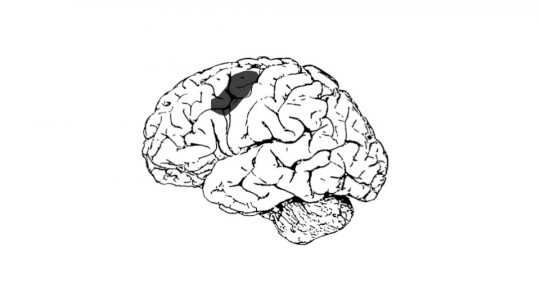
The first three years of human life are key for the development and acquisition of speech and language skills. Skills that, in principle, will accompany the person for the rest of their existence.
But there are cases in which this capacity is truncated due to lesions in certain regions of the brain; thus appearing aphasic disorders that entail deficits like agrammatism, which will be talked about throughout this article
What is agrammatism?
Agrammatism is considered a language alteration typical of aphasias Its most notable peculiarity is that the person presents a linguistic deficit which is shown through errors referring to morphological structures. That is, it presents great difficulty in joining words in a sentence forming syntactically appropriate sequences.
This failure usually appears in patients diagnosed with Broca’s Aphasia. The fact that it manifests as a difficulty in creating syntactic constructions makes it considered another symptom within this type of aphasia.
In any case, after the development of cognitive neuropsychology in the middle of the 20th century, it became clear that agrammatism was something much more complex and that it could be observed in patients who did not meet the rest of the requirements for the classic diagnosis of cognitive aphasia. Drill. In addition, the individual differences between patients were more than notable.
At that same moment, an immense debate arose about whether agrammatism could be considered a validated aphasic category This controversy still continues today, with disagreement existing between those who advocate agrammatism as an aphasic syndrome and those who oppose its validity as such.
But what are aphasias?
According to the general definition of aphasia, it refers to a language disorder caused by brain lesions in one of the language areas, and which makes the person unable to communicate through speech, writing and even mimicry.
The causes of aphasia can be:
On the other hand, if we focus on Broca’s definition of aphasia, it is characterized by the practical impossibility of achieving fluent verbal production and by the use of short, grammatical phrases produced with enormous effort and in a prosodical manner.
Symptoms
There are a series of symptoms that appear more or less consistently in the understanding and production of agrammatic patients.
1. Symptoms associated with linguistic production
These are the most frequent symptoms associated with speech.
1.1. Problems in grammatical morphemes
This symptom is reflected in the selective omission of grammatical morphemes, both free and bound However, this symptom as such is more typical of English-speaking patients, who add inflections to words. But in languages like Spanish or Italian it is not possible, since the inflections are added to the roots.
For example, in the English language you can omit -ed in the word walk, but a Spanish-speaking person will not be able to omit -ía in comía, since it will no longer constitute a word but a sound without meaning.
Faced with this fact, the omission of free grammatical morphemes and the substitution or omission of linked grammatical morphemes according to the language was considered typical of agrammatism.
1.2. Average sentence length
One of the symptoms that is observed in agrammatism, but that does not always occur, is reduced oral emission length. In which patients express themselves through expressions and phrases much shorter than usual.
1.3. Noun-verb dissociation
Another symptom that people with agrammatism present is difficulty in accessing verbal forms. That is, patients omit or nominalize the main verbs of sentences.
This deficit occurs both in structured tasks and in spontaneous oral production tasks.
1.4. Difficulties in sentence construction
These patients use subject-verb-object structures; presenting enormous difficulty in sentences of greater syntactic complexity. This symptom is a consequence of a lexical deficit that affects the correct selection of verbs.
1.5. Problems with word order
It is considered one of the most characteristic features of agrammatism. Agrammatic patients present difficulties when correctly arranging verbal expressions according to an understandable order, especially in the production of passive sentences or with structures different from the usual ones.
2. Symptoms associated with linguistic understanding
Until the 1970s, agrammatism was considered an exclusive deficit in language production, without regard to whether linguistic understanding was altered.
But research into the listening comprehension of agrammaticians has revealed that These patients show difficulties in some specific syntactic components, which prevents them from understanding some sentence structures. It is specified that the alteration is selective since patients present a great deterioration in the understanding of certain sentences, but the rest of the syntax remains intact.
Evaluation and diagnosis
Despite the complexity of this deficit, there are no specific tests to evaluate it; The tests specific to the evaluation of aphasia are the most used.
At the moment, the subtests of the Boston and Barcelona tests concerning verbal expression are used: narration of an event and description of an image. The evaluation includes the transcription of the patient’s speech with the subsequent evaluation of lexical poverty, the quality of the phrases, the incorrect use of morphemes and lexemes, or the incorporation of functional words.
1. Boston Aphasia Diagnostic Test (Goodlas and Kaplan, 1972)
It is the most used test given its ease of administration. It contains a specific vocabulary assessment test, and an abbreviated format to perform a quick screening of the patient.
2. Barcelona Test (Peña-Casanova, 1990)
This test assesses all cognitive mechanisms related to language. It is characterized by being an extensive and complicated test but consisting of an abbreviated format.
Treatment: HELPSS Method
The beginnings of this method were based on certain studies of agrammatism, in which story completion techniques were used in patients with Broca’s aphasia and agrammaticians.
In addition, This method integrated different levels of difficulty into the story completion activities In this way, the HELPSS methodology includes a succession of stages ordered hierarchically into two levels of difficulty: A and B; also working with eleven types of sentences:
Each type of sentence is worked on with both levels of difficulty, presenting twenty stories with different examples of the previous types of sentences, which are exemplified with images but not with written phrases.
During level A, the professional must tell a story that ends its image. Then a question is asked to the patient to obtain an answer from the patient using an example. When the person reaches 90% correct in a type of sentence, they move on to level B of the same.
During Level B, the example sentence is omitted; The patient must elaborate the phrase in a genuine manner.








